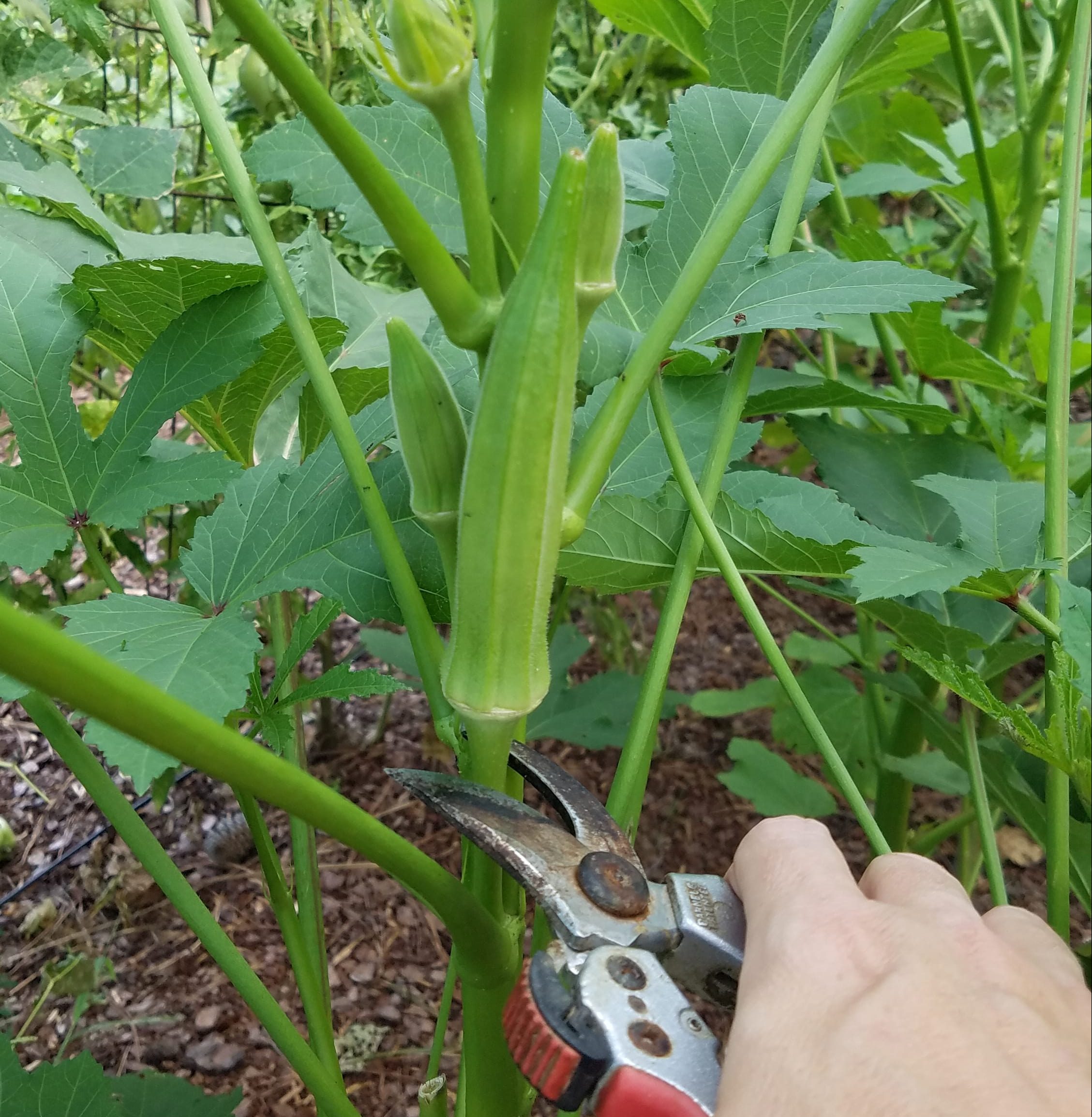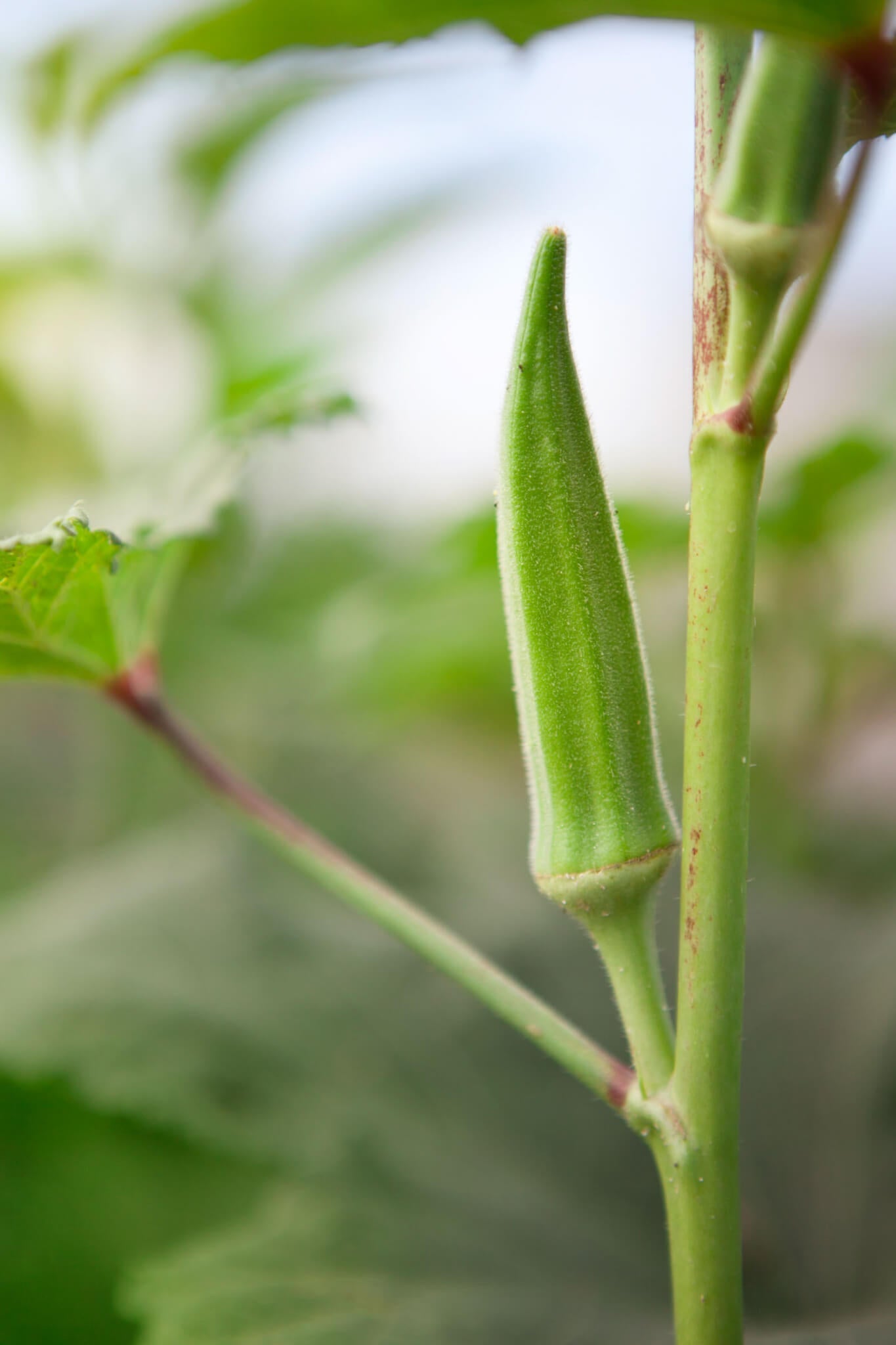Plant okra in well-drained soil with full sun exposure. Water regularly and ensure soil remains moist but not waterlogged.
Okra, also known as lady’s finger, thrives in warm climates and requires minimal maintenance. Choose a sunny spot in your garden to plant okra seeds, ensuring the soil is well-drained and nutrient-rich. Space the seeds about 12 inches apart to allow ample room for growth.
Consistent watering is crucial, but avoid waterlogging the soil. Regularly check for pests and diseases, and use organic methods to keep them at bay. Harvest the pods when they are 2-3 inches long for the best flavor. With proper care, you’ll enjoy a bountiful okra harvest throughout the growing season.

Credit: journeywithjill.net
Choosing The Right Variety
Choosing the right variety of okra is crucial for a successful harvest. Different varieties thrive in different climates and soil types. Understanding these differences helps you select the best okra for your garden.
Popular Okra Varieties
- Clemson Spineless: This is the most popular variety. It has smooth, spineless pods and matures in about 55 days.
- Red Burgundy: Known for its striking red pods. It adds color to your garden and matures in 55-60 days.
- Jing Orange: This variety has bright orange pods. It matures in about 60 days and is highly productive.
- Annie Oakley II: A hybrid variety with high yields. It matures in 52 days and is resistant to many diseases.
Climate Considerations
Okra is a warm-season crop. It thrives in temperatures between 75°F and 90°F. Cooler climates require starting seeds indoors.
Ensure the soil temperature is at least 65°F. This helps in proper germination. Okra prefers full sun exposure. Ensure it gets at least 6 hours of sunlight daily.
| Variety | Ideal Climate | Days to Maturity |
|---|---|---|
| Clemson Spineless | Warm, full sun | 55 days |
| Red Burgundy | Warm, full sun | 55-60 days |
| Jing Orange | Warm, full sun | 60 days |
| Annie Oakley II | Warm, full sun | 52 days |
By choosing the right variety and considering the climate, you can ensure a bountiful okra harvest. Happy gardening!

Credit: www.wikihow.com
Preparing The Soil
Growing okra starts with the right soil preparation. Healthy soil ensures strong plants and a bountiful harvest. Follow these steps to prepare your soil for okra planting.
Soil Testing
Start with a soil test. Testing identifies nutrient levels and pH balance. You can use a home testing kit or send samples to a lab. Soil pH should be between 6.0 and 6.8 for optimal okra growth. The test also reveals nutrient deficiencies.
Here’s a simple way to test soil pH at home:
- Take a soil sample from your garden.
- Mix it with distilled water.
- Dip a pH test strip into the mixture.
- Compare the strip color to the pH chart.
Ideal Soil Conditions
Okra thrives in well-draining soil. Loamy soil is ideal because it retains moisture and nutrients. Sandy soil works if you add organic matter. Avoid heavy clay soil.
Use the following table to understand the ideal soil conditions for okra:
| Soil Type | Characteristics | Suitability for Okra |
|---|---|---|
| Loamy Soil | Retains moisture and nutrients | Ideal |
| Sandy Soil | Drains quickly, low in nutrients | Good with organic matter |
| Clay Soil | Heavy, poor drainage | Poor |
Improve soil structure with organic matter like compost or aged manure. This adds nutrients and improves drainage. Aim for fertile soil rich in organic material.
Before planting, till the soil to a depth of 8-10 inches. This loosens the soil and removes weeds. Rake the soil surface smooth and even.
Planting Okra Seeds
Planting okra seeds is an essential step in growing this delicious vegetable. The right techniques ensure a healthy and productive crop. Let’s dive into the process of preparing and planting okra seeds.
Seed Preparation
Preparing okra seeds for planting is crucial. Follow these steps for the best results:
- Soak the seeds: Soak okra seeds in warm water overnight. This helps soften the seed coat.
- Dry the seeds: After soaking, dry the seeds on a paper towel. This helps prevent mold and disease.
Planting Techniques
Planting okra seeds correctly ensures strong, healthy plants. Use these techniques:
- Choose the right soil: Okra needs well-draining soil. Ensure the soil is rich in organic matter.
- Plant at the right depth: Plant seeds 1 inch deep. Space them 12 inches apart.
- Water regularly: Keep the soil moist but not waterlogged. Watering is crucial for seed germination.
Following these steps will help you grow healthy okra plants. Enjoy your bountiful harvest!
Watering And Fertilizing
Proper watering and fertilizing are essential for growing healthy okra plants. Okra thrives with the right amount of water and nutrients, ensuring it produces an abundant harvest. Below, we’ll discuss the best practices for watering and fertilizing your okra plants.
Watering Schedule
Watering okra requires a consistent schedule. Okra plants need moderate watering. Here’s a simple watering guide:
- Water twice a week during dry periods.
- Ensure soil is moist but not waterlogged.
- Use a soaker hose to water the base of the plants.
Morning watering helps prevent diseases. Avoid watering the leaves to reduce the risk of fungal infections.
Best Fertilizers
Fertilizing okra helps it grow strong and produce more pods. Here are some of the best fertilizers:
| Fertilizer Type | Benefits |
|---|---|
| Compost | Improves soil structure and provides essential nutrients. |
| Balanced NPK Fertilizer | Provides nitrogen, phosphorus, and potassium. |
| Fish Emulsion | Rich in nitrogen; promotes leafy growth. |
Apply a balanced NPK fertilizer every three weeks. Use compost during planting for nutrient-rich soil. Fish emulsion can be applied every two weeks for lush growth.
Pest And Disease Management
Growing okra can be a rewarding experience. However, managing pests and diseases is crucial for a healthy harvest. Understanding common pests and how to prevent diseases can help your okra plants thrive.
Common Pests
Several pests can affect okra plants. Here are some common ones:
- Aphids: Small, green or black insects that suck sap from plants.
- Flea Beetles: Tiny, jumping beetles that create small holes in leaves.
- Stink Bugs: Shield-shaped bugs that pierce pods and suck juices.
To manage these pests, you can use natural predators. Ladybugs eat aphids. Neem oil can also be an effective solution.
Disease Prevention
Okra plants are prone to several diseases. Proper care can prevent most issues:
- Fusarium Wilt: A soil-borne fungus that causes plants to wilt.
- Powdery Mildew: A white, powdery fungus on leaves.
- Root-Knot Nematodes: Tiny worms that cause root galls.
To prevent these diseases, follow these tips:
- Rotate crops each year.
- Use disease-resistant okra varieties.
- Keep the garden clean and free of debris.
Proper watering is also crucial. Water at the base of the plant to keep leaves dry.
Harvesting Okra
Harvesting okra at the right time ensures tender, tasty pods. It’s vital to know when and how to pick okra for the best results.
When To Harvest
Okra is ready to harvest when the pods are young and tender. The ideal size is about 2 to 4 inches long. Check the pods daily as they can grow quickly and become tough.
- Pods should be bright green.
- Harvest them every other day.
- Use a garden knife or shears to cut the pods.
Harvesting Tips
Here are some tips for a successful okra harvest:
- Wear gloves to protect your hands from prickly stems.
- Harvest in the morning when the pods are crisp.
- Store the harvested okra in a cool, dry place.
- Use the fresh pods within two days for the best taste.
Following these tips will help you enjoy fresh, delicious okra from your garden.
Storing And Preserving
Growing okra is rewarding, but knowing how to store and preserve it is crucial. Fresh okra’s shelf life is limited. Proper storage and preservation techniques ensure you enjoy your harvest longer. This section will guide you through effective storage methods and preservation techniques.
Storage Methods
Proper storage keeps your okra fresh and crisp. Here are some effective methods:
- Refrigeration: Store fresh okra in the refrigerator. Use perforated plastic bags.
- Freezing: Blanch okra before freezing. This helps retain its color and flavor.
- Room Temperature: Store okra in a cool, dry place. This works for short-term storage.
Preservation Techniques
Preserving okra ensures you have it all year round. Here are some popular techniques:
| Technique | Steps |
|---|---|
| Pickling |
|
| Dehydrating |
|
| Canning |
|
By following these methods and techniques, you can enjoy your okra harvest for months. Freshness and flavor are preserved, providing you with quality ingredients for your meals.

Credit: bonnieplants.com
Companion Planting
Companion planting is a method of growing plants together for mutual benefit. It helps improve growth, flavor, and pest control. When growing okra, choosing the right companions can boost your harvest.
Best Companion Plants
Some plants grow well with okra. Here are the best ones:
- Cucumbers: They share similar water needs and keep the soil cool.
- Melons: They cover the soil, reducing weeds and keeping moisture in.
- Peppers: They repel pests that may harm okra.
- Eggplant: These plants thrive in the same conditions as okra.
Avoiding Bad Neighbors
Some plants do not grow well with okra. Avoid planting these nearby:
- Tomatoes: They can attract pests that harm okra.
- Beans: They may compete with okra for nutrients.
- Cabbage: This plant can stunt the growth of okra.
- Strawberries: They are prone to diseases that can affect okra.
By choosing the right companions, you help your okra plants thrive. Remember to avoid bad neighbors to ensure a healthy garden.
Frequently Asked Questions
What Is The Best Time To Plant Okra?
The best time to plant okra is in spring. Wait until the soil warms to 65-70°F. This ensures optimal germination and growth.
How Often Should I Water Okra Plants?
Water okra plants once a week. Ensure the soil is moist but not waterlogged. Consistent watering promotes healthy growth and pod production.
How Much Sunlight Does Okra Need?
Okra needs full sunlight for at least 6 hours a day. More sunlight ensures better growth and higher yields.
What Type Of Soil Is Best For Okra?
Okra thrives in well-draining, sandy loam soil. Enrich the soil with organic matter for best results. Ensure the pH is between 6. 0 and 6. 8.
Conclusion
Growing okra can be a rewarding experience with the right steps. Ensure proper soil, watering, and sunlight. Regularly check for pests and diseases. Harvest when pods are tender for the best flavor. Follow these tips, and you’ll enjoy a bountiful okra harvest in no time.
Happy gardening!
